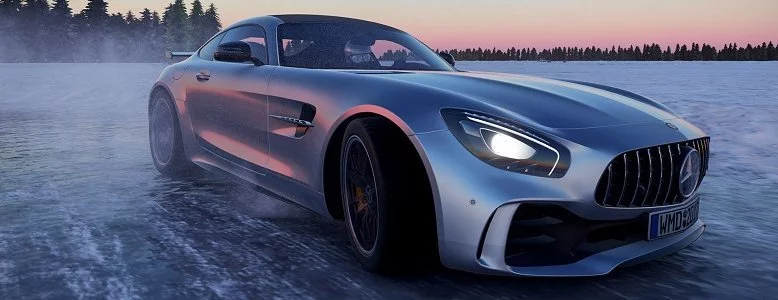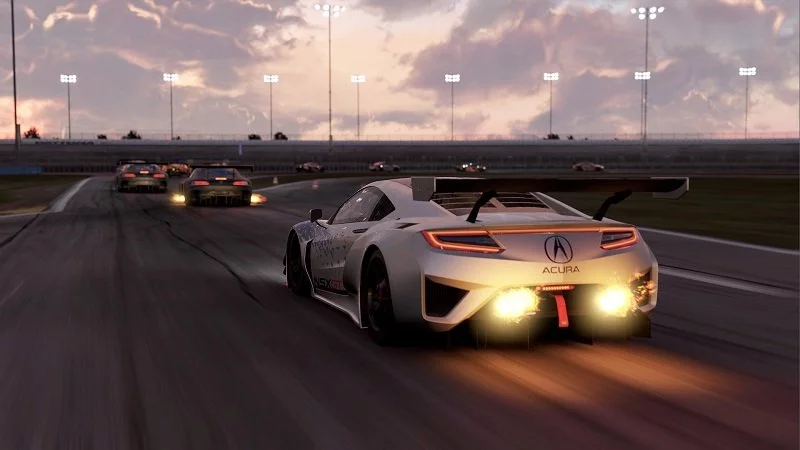Stevivor recently had the opportunity to sit down with Rod Chong, CCO from Slightly Mad Studios to discuss its upcoming racing simulator, Project CARS 2. On the topic of the game’s biggest changes, here’s what he had to say.
“Oh, where do we begin! We’ve come up with a concept called ‘anytime, anywhere’, which is one of the focal points for Project CARS 2. Too often when a sequel is released for a racing title, they’ll add more cars or a new feature, but we wanted to give our fans and racing gamers a completely new experience. We wanted to bring different types of racing in, for example rallycross, which we feel is the motorsport of the moment. You’ve got these short races, cars flying over jumps, going sideways, burning tires and smashing into each other – it’s perfect. So taking our advanced physics engine and applying it to an incredible motorsport like rallycross, it felt like a match made in heaven.
“So that’s definitely one of the more significant changes in Project CARS 2. We use the term ‘loose surface racing’, and that also includes snow and ice racing. That’s where ‘anywhere’ comes from. If you look at the last game, you had 24-hour lighting where you could set any time you like on any track. To that we’ve added four seasons so you can experience all the circuits at all times of the year, which doesn’t just mean how they look, but also the different weather types and temperatures that come with it. For example, if you race at Silverstone in Winter it’s going to be cold. You need to think about the tires that would work best, so you’d pick soft tires – but those soft tires would disintegrate after a few laps on a hot Summer’s day. This is where ‘anytime’ comes from.”
“This is the kind of headspace that we want gamers to be in when playing this game,” Chong continued. “They should think of themselves as racing drivers, even when they’re just sitting at home, playing casually on a gamepad.”
Rod then spoke about the focus of the sequel, as a true motorsport simulator.
“Fundamentally, Project CARS 2 is focused on replicating the world of motorsport. We do make a point though of allowing players to create the experience they want. We encourage everyone to spend the first 15-20 minutes customising, because it’s a completely customisable game. You can enable steering help, make the AI as powerful, aggressive and fast as you like, and adjust a host of different parameters. We always recommend making the AI just a fraction slower than you, so if you make a mistake you can reel your way back in. Ultimately though, it is a sim, so we want it to be realistic but at the same time accessible.”
Rod then discussed the importance of feedback and how it influenced the game’s development.
“The ‘CARS’ in the name stands for community-assisted racing simulator, so feedback was definitely important. People are always asking “where is Porsche or Lamborghini”, or they’ll be asking where are the Japanese cars, so we definitely looked at that. We also looked at what are the most requested tracks to understand where people want to drive. One thing we also saw a lot of feedback on was the handling and tire modelling in the original Project CARS. As you got close to, or over the limit, it was difficult to get the car back, more so than in real-life.
“We think there’s often a falsehood that you need to feel like you’re driving on ice for the game to feel realistic, where only 1% of the people can drive properly and have fun. This is actually not true. Most modern race-cars are designed to be easy to drive. In Project CARS 2 you can really feel as the car goes over the limit, that if you start to slide, you can recover the car in a way that you couldn’t in the first game. The game is now more realistic, but at the same time more fun. You can push much harder and have more confidence.”
On this point, Rod continued.
“Anyone who’s driven a powerful car in real-life knows you don’t need special training to go quick, and this is something that’s an idea we need to promote. A lot of people in the sim community have a vested interest because they consider themselves elite. If they come in and they’re driving a car which is planted, they might not understand what’s going on. Think about [the motorsport] GT3. As a category, GT3 is built around amateur, customer racers – CEOs of companies or rich playboys, these kind of people who have a bit of money and want to race cars. The vast majority of GT racing is for privateers who are funded by the drivers. These race-cars are designed to be easy to drive. They usually have far less power than their street-car equivalents, they have a lot of downforce and a lot of tire. They also have traction stability control, ABS and are designed specifically so that the customers can have a good time and not crash.”
“So we replicated that, as GT is the most common type of racing among the Project CARS community. If people ask why the cars aren’t sliding around all the time we can respond by saying that the real cars handle like that, we have all the data to support it.”
Of course, the most important element of a simulator is the handling. Rod spoke about the independent evaluation of the physics model.
“Interesting, some of the more exotic road cars, as you approach the limit, are actually kind of crazy. 600-700hp+ with road tires and no giant wings, it’s a thing! That said though, my opinion doesn’t matter, what does matter are the opinions of the professional drivers we bring in. We had Porsche lend their racing drivers to test the cars. We worked closely with McLaren and had their official drivers test their cars. They’re the ones who tell us we did a good job. We want the professionals to be verifying the cars are correct. We want the data from the car companies to show us what the cars are like going around the track, and we want to confirm that with the game.”
We then wrapped things up talking about our favourite cars and tracks.
“I’m lucky in that I attend to a lot of races, I’m definitely a motorsports fanboy. Whenever I go to a country I like to visit the race tracks. My favourite is the Porsche 935, which I’m completely obsessed with – have been since I was a kid. I own literally hundreds of model cars of it and I’m lucky to own a replica one too. It’s a legendary car that was raced in the late 70s and early 80s. A 700hp+ motor and incredible amounts of turbo lag – you hit the gas and nothing happens, then all of a sudden the power comes in.”
“I like driving at Sedona and Spa, which are amazing tracks. Spa is always my go-to circuit, but I like racing on Bathurst too, but more so with modern cars. I also enjoy multi-class racing. Doing hour races, battling for a lead, then trying to get through the slower cars later on. For me, this is one of the best features of Project CARS 2.”
Project CARS 2 launches on Xbox One, PS4 and PC on 22 September 2017.
This article may contain affiliate links, meaning we could earn a small commission if you click-through and make a purchase. Stevivor is an independent outlet and our journalism is in no way influenced by any advertiser or commercial initiative.


























